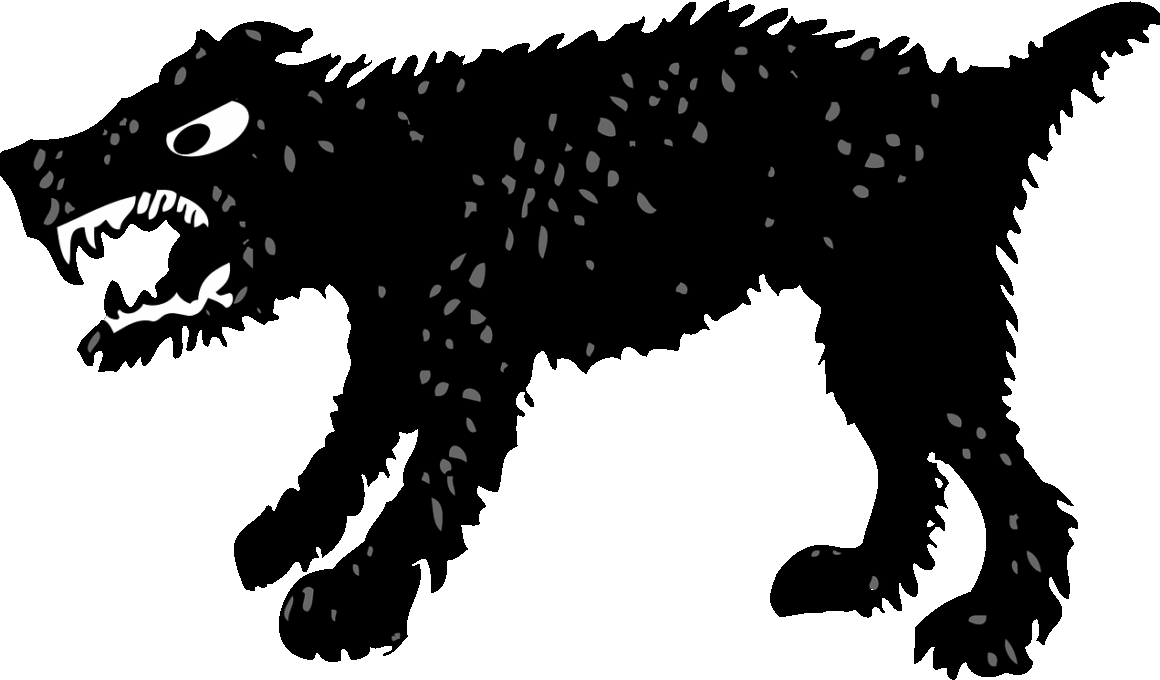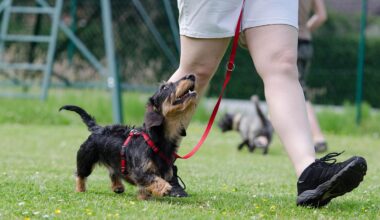How to Safely Introduce Aggressive Dogs to Other Pets
Introducing aggressive dogs to other pets can be a significant challenge requiring careful planning. When considering a socialization strategy, it’s vital to understand the reasons behind aggression. Firstly, identify triggers that provoke aggressive behavior, such as specific smells, sounds, or the presence of certain animals. For instance, some dogs may react negatively to high-energy pets while being more comfortable with calmer animals. Active observation during initial interactions is necessary to pinpoint these triggers. It is also crucial to assess the dog’s history regarding socialization, ensuring they have had positive experiences before with other animals. Additionally, seek help from professional trainers or behaviorists who specialize in dog aggression. They can offer tailored advice and support, making the introduction process smoother. Surround the initial meeting with controlled environments, and utilize leashes or barriers as physical safeguards. Remember, the goal is mutual enjoyment of each other’s company, fostering positive experiences from the start. Always prioritize safety, both for the aggressive dog and the other pets involved, to cultivate a harmonious living environment.
In efforts to manage aggression, employing gradual introduction techniques can lead to success. Start with allowing the dogs to see each other from a distance, separated by a secure barrier. This separation allows them to become accustomed to one another without direct confrontation. During these initial meetings, observe their body language closely for signs of stress or agitation. Look for tail positioning and ear movements indicating comfort or discomfort. Gradually decrease the distance over time while maintaining control. Reinforcement of positive behaviors is essential; reward calm actions with treats and praise. Encourage short, positive interactions frequently, never pushing them beyond capability. Ensure each dog can retreat to a safe space, creating a secure base they can return to if needed. Furthermore, structure each session to be brief, gradually increasing the duration of these meetings as their comfort level rises. Patience is key; progress may be slow, but it must remain consensual between the dogs. Lastly, consistency with routines builds structure and predictability, which can alleviate anxiety during future encounters.
Understanding Canine Body Language
Comprehending canine body language is essential when socializing aggressive dogs. Dogs communicate their discomfort or excitement through non-verbal cues. For example, a dog displaying its teeth subtly could be worried rather than solely showing aggression. Pay attention to changes in posture, as a rigid stance may indicate tension, while a relaxed body expresses confidence. Effective socialization involves recognizing these signs to adjust interactions accordingly. Growling can serve as a warning sign, and understanding this helps prevent escalation. If a growl occurs, it’s vital to provide space to avoid provoking the dog further. Additionally, observe the tail position; a high, stiff tail can signify aggression, whereas a wagging tail can indicate playfulness or curiosity. Assess the dog’s ears too; pinned back ears suggest fear, while perked ears signify interest. Awareness of these indicators helps in assessing the mood of each dog in the interacting pair. When anxious behaviors are identified and addressed appropriately, it reduces the chances of confrontations and promotes a more peaceful atmosphere during introductions, ensuring a smoother social experience for all pets involved.
Implementing training techniques can significantly assist in managing aggression during social interactions. Basic commands such as ‘sit’ or ‘stay’ create a structure for control. Start training sessions in a distraction-free environment to establish compliance before progressing to more challenging scenarios. Use positive reinforcement, where treats or toys reward appropriate responses. Ensure that the dog associates other pets with positive outcomes, helping to diminish aggression-driven behaviors over time. Additionally, consider utilizing techniques such as desensitization or counter-conditioning, where a dog slowly becomes accustomed to its triggers. For instance, during anticipation of a meeting with another pet, provide treats to build a positive association with the presence of the other animal. This gradual exposure helps desensitize their reactions. Socialization should be ongoing and occur at a pace suitable for the individual dog, allowing them to acclimatize without becoming overwhelmed. Consistent practice of these techniques, paired with patience and commitment, results in meaningful improvement in the dog’s behavior, enhancing overall interactions with other pets effectively.
Incorporating Playtime
Integrating playtime into the introduction process plays a crucial role in reducing aggression. Play activities help create positive experiences between the dogs, allowing them to bond over shared enjoyment. During initial meetings, engage both dogs in parallel play using toys to stimulate their interest simultaneously. This strategy encourages cooperative behavior and distracts them from their natural instincts. Opt for toys that both dogs can interact with, promoting logic and engagement. Also, consider using balls or tug-of-war ropes, granting a fun yet safe way to interact without direct confrontation. Ensure play is closely monitored to watch for signs of overstimulation, which could trigger aggressive responses. If tensions rise, it may be necessary to pause the play and help both dogs recalibrate before resuming. Regular short sessions focusing on play enhance their ability to express joy around one another, which can significantly diminish aggression over time. Additionally, vary activities to keep them exciting; offer both physical and mental stimulation through different games. A playful atmosphere cultivates a friendly rapport, ensuring a successful introduction of aggressive dogs to fellow pets.
Establishing safe zones during the introduction process is vital for the well-being of all pets involved. Create designated areas where each dog can retreat as needed, ensuring they feel secure. This provides them the option to decompress if the situation becomes overwhelming. Each safe zone should include their personal belongings, such as favorite toys or blankets, which can foster feelings of safety and familiarity. Furthermore, it’s vital to recognize when a dog requires a break, thus allowing them to recharge instead of letting stress build up. Schedule regular breaks during meetings to teach both dogs that taking a step back isn’t a negative experience. During these breaks, engage the dogs individually, allowing time for each to relax while still undergoing socialization training. Offering treats during breaks reinforces a positive experience associated with the other dog’s presence. Create boundaries for zones to prevent any territorial disputes, effectively minimizing anxiety levels. By emphasizing individual needs and providing safe spaces, you foster a much healthier dynamic during these crucial introductions, ultimately leading to more harmonious relationships.
Seeking Professional Guidance
Sometimes, managing aggressive dogs during socialization may require professional assistance for safety. Experts can evaluate the situation and offer customized strategies tailored to the specific behaviors exhibited. Enroll in classes that focus on reactive dogs, where trainers guide you through techniques that promote successful interactions. Consult veterinarians or certified canine behaviorists who specialize in animal behavior, ensuring they offer proven techniques for aggression management. Professional guidance can vary from one-on-one training to group sessions, allowing for appropriate skill application amid distractions. Moreover, trainers can educate pet owners regarding their dogs’ unique needs, ensuring the implementation of effective boundaries. Such support allows pet owners to gain increased confidence while introducing their aggressive dogs to other pets. Experience teaches that well-structured environments contribute significantly to socialization success, and experts are equipped to provide that structure. Nevertheless, always research trainers, seeking evidence of their credentials and successful histories with similar dogs. With adequate assistance, the transition becomes smoother. Engaging with professionals not only eases the process but can enhance relationship dynamics among all involved furry friends significantly.
In conclusion, observing safety while introducing aggressive dogs to other pets is paramount. Assess each dog’s comfort level throughout the process, prioritizing their mental well-being. Gradual exposure accompanied by patience leads to improved behaviors, positively influencing the overall dynamics of the household. Monitoring their bodies allows pet owners to detect stress signals, which is crucial for maintaining a peaceful atmosphere. Implementing appropriate training techniques will also promote calm behaviors through clear communication. Offering playtime can facilitate bonding, making socialization experiences more enjoyable for all pets involved. Moreover, the incorporation of safe zones fosters an environment allowing each dog an opportunity to decompress. Furthermore, consider seeking professional advice when necessary to ensure that the proper steps are being followed for effective introductions. Building a relationship between aggressive dogs and other pets takes time and dedication but yields substantial rewards. With focused strategies in place, everyone can coexist happily and harmoniously. Ultimately, investing effort in the socialization process is essential for a peaceful household, reinforcing the idea that every dog can positively integrate into a multi-pet environment.


